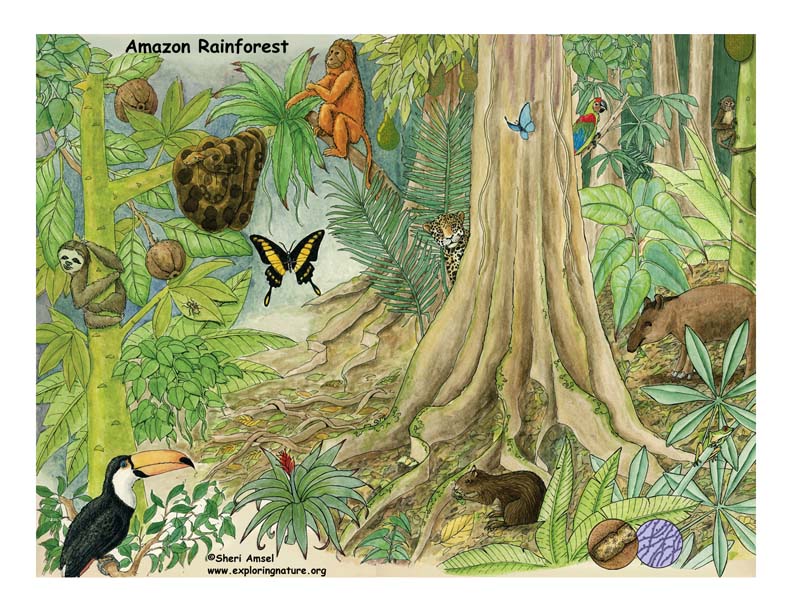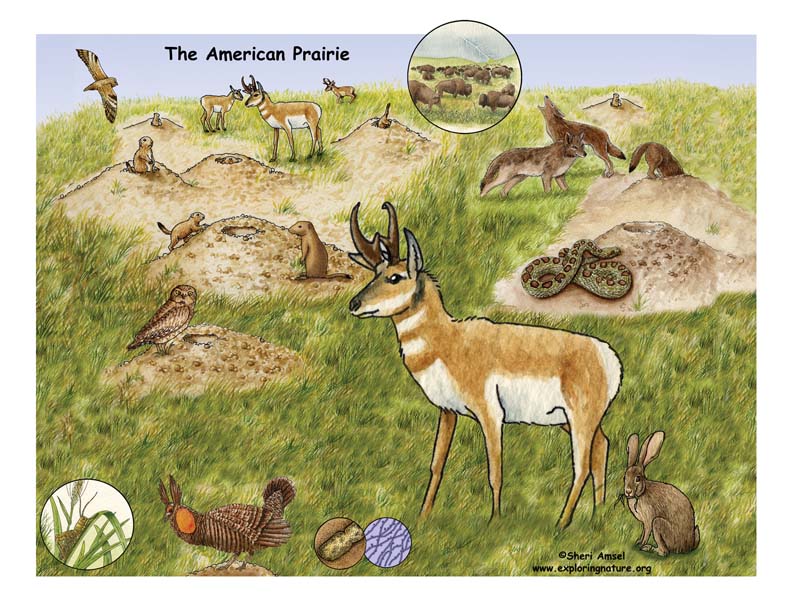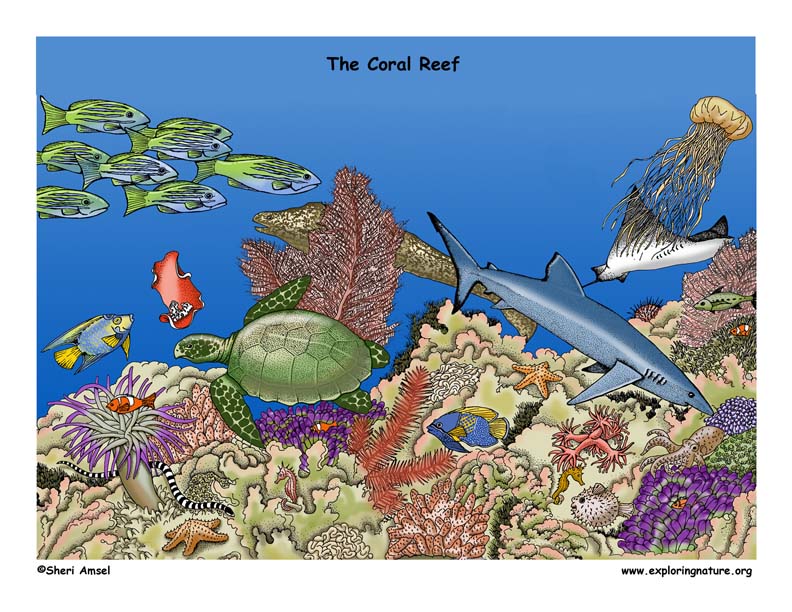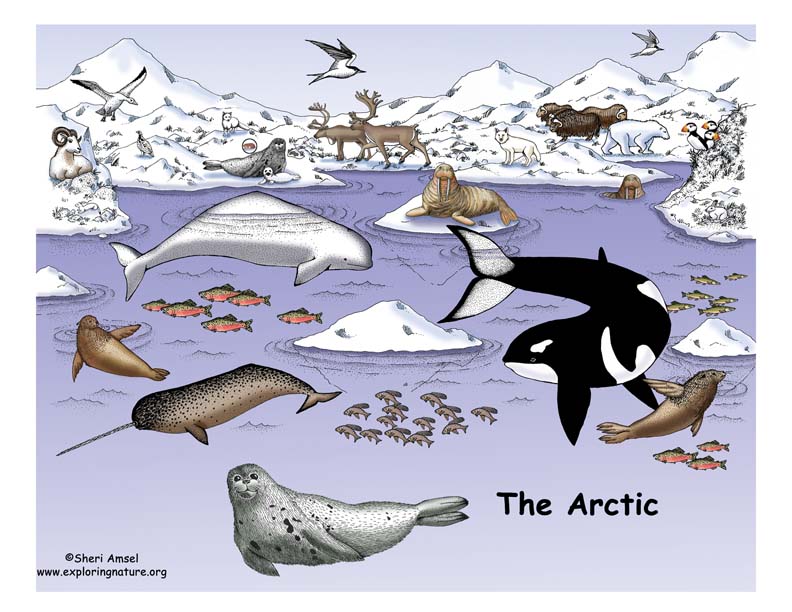

Below are ten habitats that can be used to introduce Biomes and Food Webs. They have no animal names so you can look at them and think critically about what makes each a successful working ecosystem.
Remember that an ecosystem is a biological community together with all the non-living (abiotic) things around it, like rocks, water, sun and air.
A community includes the many different populations of species living in one area and interacting, like a herd of deer grazing on a meadow of grass (not including the non-living parts).
So, look at each habitat illustration and note the living populations of animals and non-living parts of the ecosystem.
Think about how they interact.
Think about which living things preys on one another. Which are scavengers and which are producers?
*Thanks to Marla Goldberg, Sixth Grade Advisor, The Skokie School for recommending this activity.
When you research information you must cite the reference. Citing for websites is different from citing from books, magazines and periodicals. The style of citing shown here is from the MLA Style Citations (Modern Language Association).
When citing a WEBSITE the general format is as follows.
Author Last Name, First Name(s). "Title: Subtitle of Part of Web Page, if appropriate." Title: Subtitle: Section of Page if appropriate. Sponsoring/Publishing Agency, If Given. Additional significant descriptive information. Date of Electronic Publication or other Date, such as Last Updated. Day Month Year of access < URL >.
Amsel, Sheri. "Introduction to Biomes and Habitats" Exploring Nature Educational Resource ©2005-2024. December 13, 2024
< http://www.exploringnature.org/db/view/1197 >









